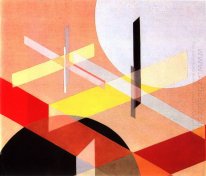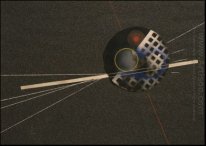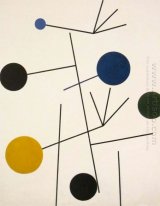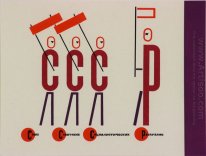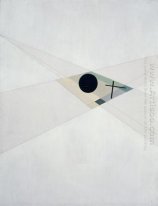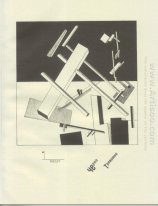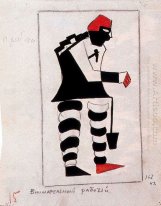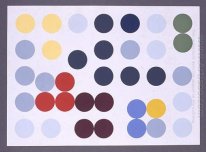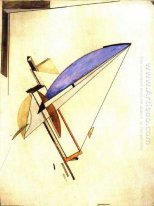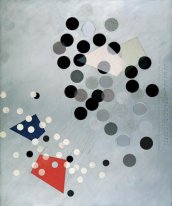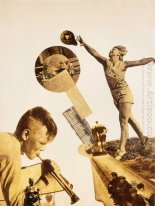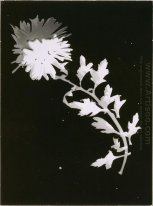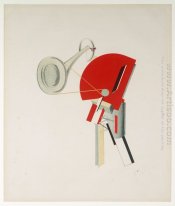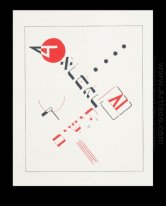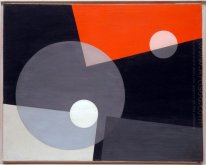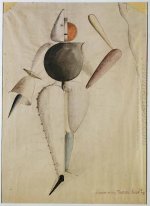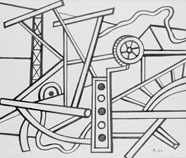
Constructivism was a post-World War I outgrowth of Russian Futurism, and particularly of the "corner-counter reliefs" of Vladimir Tatlin, which had been exhibited in 1915. The term itself would be coined by the sculptors Antoine Pevsner and Naum Gabo, who developed an industrial, angular approach to their work, while its geometric abstraction owed something to the Suprematism of Kazimir Malevich. The teaching basis for the new movement was laid by The Commissariat of Enlightenment (or Narkompros) the Bolshevik government"s cultural and educational ministry headed by Anatoliy Vasilievich Lunacharsky who suppressed the old Petrograd Academy of Fine Arts and the Moscow School of Painting, Sculpture and Architecture in 1918. IZO, the Commissariat"s artistic bureau was run during the Russian Civil War mainly by Futurists, who published the journal Art of the Commune. The focus for Constructivism in Moscow was Vkhutemas, the school for art and design established in 1919. Gabo later stated that teaching at the school was focused more on political and ideological discussion than art-making. Despite this, Gabo himself designed a radio transmitter in 1920 (and would submit a design to the Palace of the Soviets competition in 1930).
Vladimir Tatlin was the first Constructivist. Tatlin saw the Cubist works of Picasso and Braque and adopted many of their methods, such as using everyday objects to create works of art. Tatlin used ordinary industrial objects to assemble machine-like constructions that approximated the Constructivist ideal of a revolutionary machine. Tatlin orner Counter-Relief is a good example of this style. Tatlin sculptures were minimalist, contained strong geometric figures, and typically used entire industrial objects, such as cross-beams, hammers, and wires.
Tatlin style quickly spread throughout Russia, and elements of his style can be found in the work of artists such as Naum Gabo and his brother, Antoine Pevsner. Gabo and Pevsner together wrote the realistic Manifesto,hailing Constructivism as the first truly abstract art, ahead of Cubism and other similar styles. Gabo believed that the purpose of Constructivist art was mainly spiritual, and that the art should be separated from conventional ideas about lines, volume, and mass.
While some, such as Gabo, ascribed spiritual importance to Constructivism, it quickly emerged as a secular art form. Constructivism focused on creating the ideal society of man under the revolutionary communist regime. In its painted form, Constructivism is most easily recognized as the typical style of Soviet-era propaganda. The artists used strict geometry and iconic human figures to express the idea of the new society and the machinery that powers it. They relied heavily on sharp lines and strong color contrasts to create bold images evoking power and change. The color red typically accented these paintings as well, due to Constructivism political motivation and the association of red with the communist Red Army. The Constructivist style spread to photography as well, and artists such as Alexander Rodchenko used Constructivist ideals and styles in both painting and photography.
Constructivism became a powerful art movement in Russia until about 1934, when the buildup of Germany military power and Russia internal struggles made the region less stable for modern artists, causing many of them to emigrate to Paris or Great Britain. When World War II began in Europe, these artists continued to flee and arrived in New York City, which quickly became the global art center.
Constructivism contributed to the art scene with its minimal, industrial style, but its greatest impact was on architecture. Many signs of its impact can still be seen today in modern structures that use strong geometric shapes and simple structures to convey power and the ideal society of man. Also, most of today graphic design is influenced, at least in part, by Constructivist thought, relying on simple images with strong geometric shapes and contrast.







